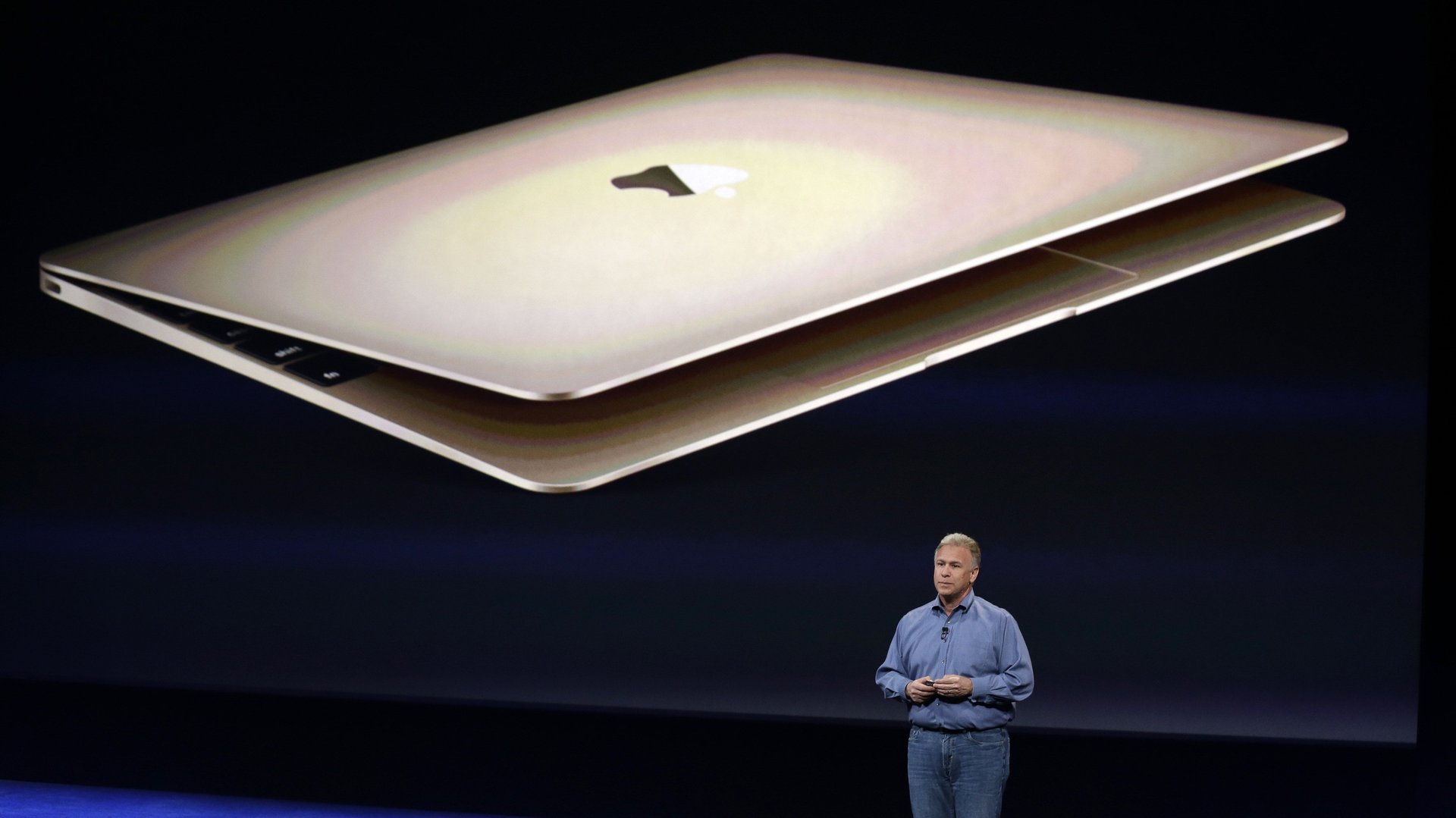Apple executive Phil Schiller, in his own words, on why the new MacBook only has one port
When Apple launched its new, super-thin MacBook laptop in April, much of the initial criticism focused on its having only one port, a new type of USB called USB-C.


When Apple launched its new, super-thin MacBook laptop in April, much of the initial criticism focused on its having only one port, a new type of USB called USB-C.
People wondered: How am I supposed to charge my laptop and iPhone at the same time? Why do I have to spend $80 on an adapter that hooks it up to an external screen? Why doesn’t it at least have one USB port on each side, like the old MacBook Air?
In a rare live interview, long-time Apple executive Phil Schiller—who heads product marketing and is one of the few executives who appears in the company’s product keynote presentations—explained the thinking behind the new MacBook. Schiller spoke to Daring Fireball author John Gruber at a taping of Gruber’s podcast, “The Talk Show,” following Apple’s Worldwide Developers Conference keynote last week in San Francisco.
Of course, Apple’s design was on purpose. In an ideal world, the new MacBook would have had zero USB ports.
Here’s Schiller’s text, lightly edited. Or you can watch the video, embedded below—this part starts at the 56:16 mark.
What the design team first envisioned when we started working on MacBook was to say: If all we do is incremental, slight change, where’s the excitement? Where’s the value of Apple pushing things forward? We need to take bold risks. And if people don’t like it, well, they can keep buying the MacBook Air. They can keep buying the MacBook Pro.
But: Why don’t we design a product that’s around this wireless world that has really no physical connection that you need—you can get by without ever needing that. Wouldn’t that be a better world? And in doing that we realized, yeah, but we do need to charge it. So let’s go create this one port that can charge and be USB and be your video out. And that way, if you need to connect, you can. You’re not giving that up.
And if you do that, how far can you push it? How thin can it get? How light can it get? How aggressive of a design can it be?
I’m in my job for one reason: Because I’m a customer like all of you. I love these products. I love this company. I want this company to be the best Apple it can ever be. And one of the ways it can be the best Apple it can ever be is to take bold risks and try to think of new things others aren’t willing to do.
This is all the same mentality as—I remember when we took out the floppy. I’m sure many of you all do, too. It’s the exact same thinking! I sat in the room with friends of mine who worked at other companies in Texas and other places, and they literally said, “Oh my god I’m so jealous! We can’t do that! We can’t take the risk. Because if the world is going to be risk-averse and doesn’t want us to take away anything—you know, if Dell doesn’t have a floppy but Toshiba does, they’ll just buy the Toshiba. They’re all the same except if you’re missing one thing, no one will buy your stuff.”
They said, “You’re so lucky, you make something where your customers give you the opportunity to try something in a completely different way. And they listen to you and they try it. And if you have to adjust and make an external drive for a couple years, great, you’ll do it. But you get to make that change and move on.”
That’s the embodiment of this new MacBook, which is: Take a bold risk. Maybe some people will think it’s not perfect for them yet. But for a surprising number of people, it’s already their future laptop.